Thank you! Your submission has been received!
Oops! Something went wrong while submitting the form.
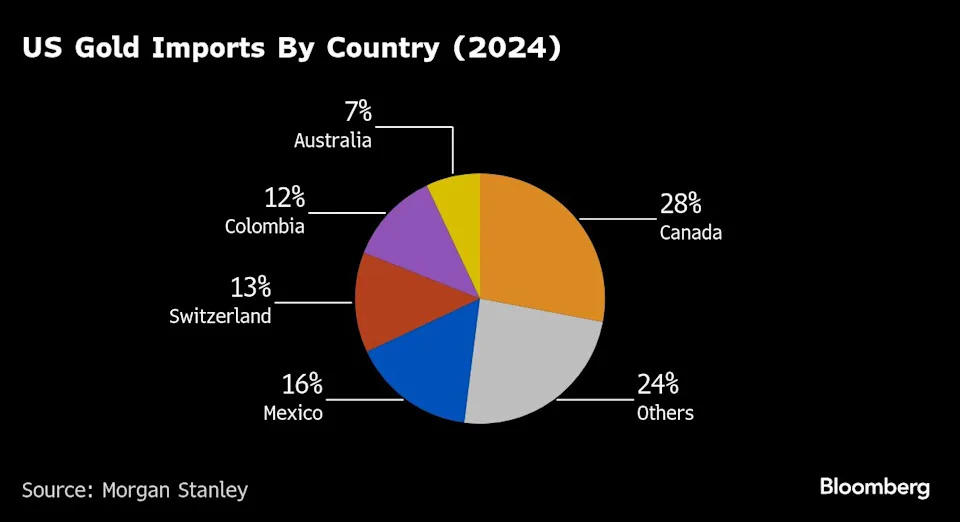
A global market based on gold bars shudders on tariff threat
Key Points
- US Tariff Ruling Chaos: A US Customs and Border Protection ruling on July 31, made public on Friday, suggested tariffs on gold imports, causing gold futures in New York to soar to a record high before prices dropped when the Trump administration hinted at no tariffs on gold bars.**
- Market Disruption: The potential tariffs threatened the global gold market's complex system of banks, refineries, and couriers, with Swiss refineries and Asian sales to the US halting, and warnings of severe impacts on the Comex futures market in New York.**
- Price Disparity: The tariff scare created a record gap between New York futures (over $3,530/ounce) and London benchmark prices (over $100 lower), with a 39% tariff on Swiss gold making shipments unfeasible unless prices hit $4,700/ounce.**
- Industry Concerns: Industry veterans and trade groups expressed disbelief and concern over the disruption, highlighting the fragility of the gold trade system and the thin margins of independent refineries, fearing long-term consequences.**
- Potential Resolution: Hope remains as the Trump administration plans an executive order to clarify misinformation about gold tariffs, potentially averting a crisis for the $1.1 trillion gold market.**
Summary
A recent US Customs and Border Protection ruling suggesting tariffs on gold imports sent shockwaves through the global gold market, causing New York futures to hit a record high above $3,530 an ounce before plummeting when the Trump administration indicated no tariffs would apply. Announced privately on July 31 and publicized on Friday, the ruling threatened the intricate network of banks, refineries, and couriers that underpin the $1.1 trillion gold trade, particularly affecting key hubs like New York, London, and Switzerland. Swiss refineries halted US shipments, and Asian sales paused, while a record price gap emerged between New York and London markets. Industry experts warned of dire consequences for the Comex futures market and the fragile gold trade system, exacerbated by potential tariffs on key suppliers like Canada and Mexico under Trump’s trade policies. The tariff threat, part of broader trade war volatility, highlighted the market’s vulnerability, with thin-margin refineries at risk of collapse. However, hope persists as the administration plans an executive order to clarify the situation, potentially averting a crisis. This incident underscores the profound impact of policy uncertainty on commodities, as traders, banks, and logistics firms brace for further changes.
yahoo
August 9, 2025
Stocks

Duolingo's roller-coaster week highlights a crucial risk factor to companies
Key Points
- Duolingo's Stock Volatility: Duolingo experienced a 30% stock surge after a strong quarterly performance, only to lose half of those gains following OpenAI's GPT-5 debut, which showcased a language-learning app creation capability.**
- OpenAI's GPT-5 Impact: The new GPT-5 model by OpenAI demonstrated the ability to quickly develop a language-learning tool, directly challenging Duolingo's market position and contributing to a 5% stock drop by week's end.**
- AI's Dual Role: While Duolingo benefited from AI with improved gross margins and subscriber growth through AI conversational features, the same technology posed a competitive threat via rapid innovation from competitors like OpenAI.**
- Competitive Risks in AI: The article highlights the broader risk for software companies in the AI era, where rapid technological advancements can render existing products obsolete or less competitive overnight.**
Summary
Duolingo, a language-learning platform, faced a dramatic stock roller-coaster this week, as reported by Yahoo Finance. Initially, the company saw a 30% stock surge after a stellar quarterly performance, driven by efficient AI use that boosted gross margins and subscriber growth. However, the gains were slashed in half following OpenAI's debut of GPT-5, a model capable of creating a language-learning app in minutes, posing a direct threat to Duolingo's market. This led to a further 5% stock decline by Friday. The incident underscores the double-edged nature of AI: while Duolingo leverages it for innovation, including AI conversational tools, it also faces risks from competitors’ rapid advancements. OpenAI's ability to generate software on demand highlights the vulnerability of software firms in the AI era, where new technologies can quickly disrupt established brands. The article also notes Duolingo's prior warnings about such risks in its 10-K filing. This case exemplifies the broader challenges in the tech industry, where AI can both propel and jeopardize companies, emphasizing the competitive edge of AI infrastructure over software in Wall Street's eyes.
yahoo
August 9, 2025
Stocks
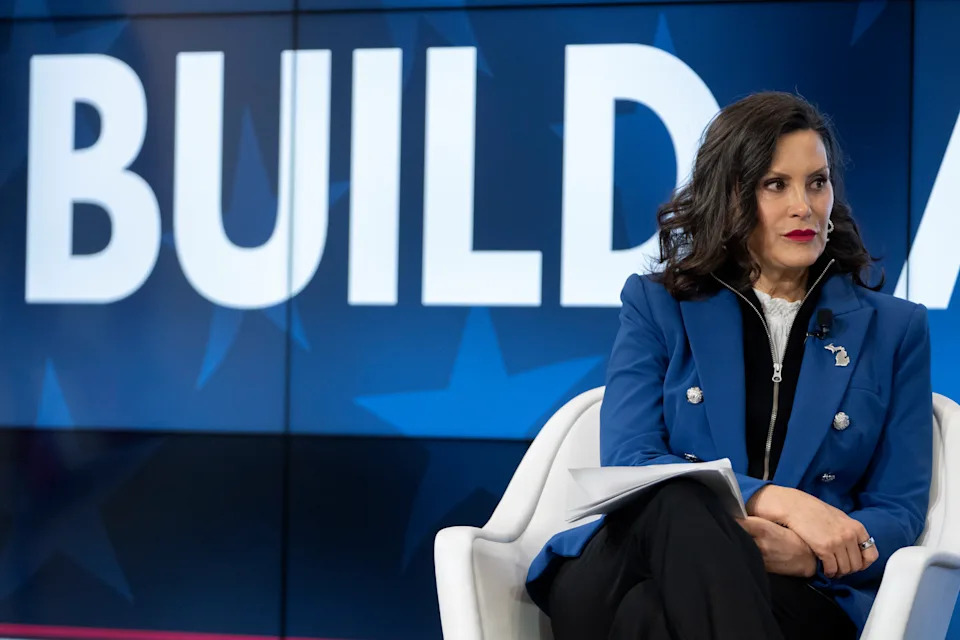
Whitmer told Trump in private that Michigan auto jobs depend on a tariff change of course
Key Points
- Michigan Gov. Gretchen Whitmer met privately with President Donald Trump to argue that his tariffs are harming the automotive industry, a key economic sector in Michigan.
- Whitmer presented a slide deck to highlight the economic damage from tariffs, which could lead to job losses and reduced profits in a state critical to Trump's 2024 election win.
- Despite multiple meetings with Trump, including this third one since January, no specific commitments were made by the president to address Whitmer's concerns.
- The tariffs impose high import taxes on steel, aluminum, and parts, putting U.S. automakers at a disadvantage compared to foreign competitors with lower tariffs.
- Major automakers like Ford and GM have reported significant financial losses due to tariffs, with costs impacting their ability to reinvest in domestic factories.
Summary
Michigan Governor Gretchen Whitmer met with President Donald Trump in the Oval Office to discuss the detrimental impact of his tariffs on the state's automotive industry, a vital economic driver. Armed with a visual presentation, Whitmer highlighted how tariffs on steel, aluminum, and parts from China, Canada, and Mexico threaten factory jobs, profits, and competitiveness, especially against German, Japanese, and South Korean automakers facing lower import taxes. Despite this being her third meeting with Trump since January, no concrete commitments were made. The tariffs have already cost companies like Ford and GM billions, hampering reinvestment in domestic production—a goal Trump champions. Whitmer also sought federal support for ice storm recovery and Medicaid changes. Michigan, a swing state that helped Trump win in 2024, has lost 7,500 manufacturing jobs since his return, with smaller suppliers like Detroit Axle struggling to survive. While Trump’s administration claims to prioritize American auto dominance through trade frameworks, critics, including industry leaders, warn of severe economic fallout. Political experts note Michigan’s symbolic and electoral importance, questioning whether voters will hold Trump accountable if tariffs fail to deliver promised growth. Whitmer’s direct appeals to Trump reflect a unique, yet challenging, balancing act for Democratic leaders navigating opposition to his agenda while protecting state interests.
yahoo
August 9, 2025
Stocks
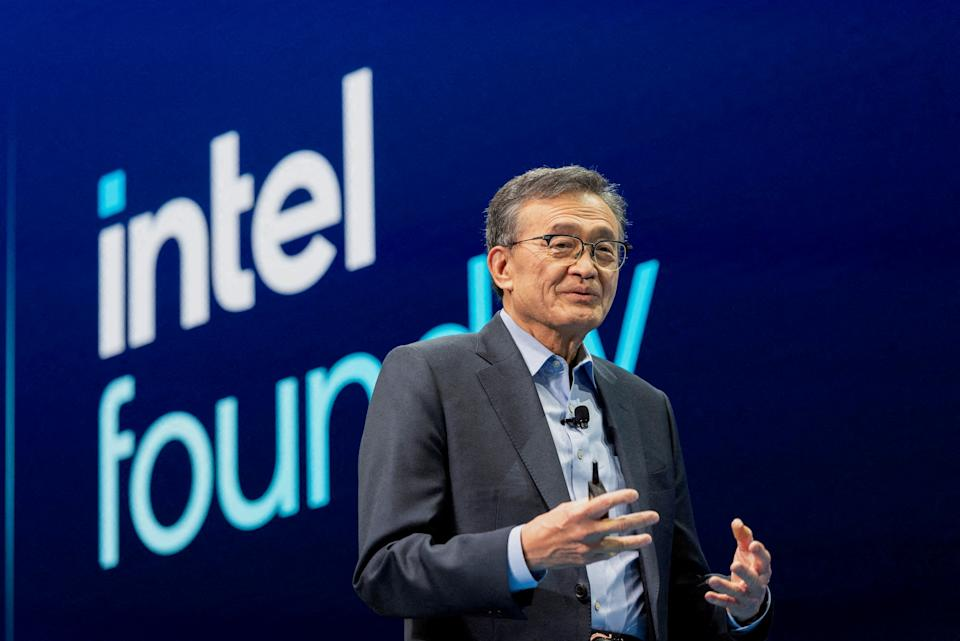
SoundHound AI CEO says 'blowout quarter' is just the beginning as stock surges
Key Points
- SoundHound AI (SOUN) reported a 217% year-over-year revenue increase, reaching $43 million, despite a per-share loss of $0.19.
- The company's stock surged nearly 30% post-earnings, with a 160% gain over the past 12 months, though it's down 32% year-to-date.
- SoundHound raised its fiscal 2025 revenue guidance to $160-$178 million, driven by new deals and cross-selling across industries like restaurants and automotive.
- The company is expanding in voice commerce with agentic AI, partnering with major OEMs and restaurant chains like Red Lobster, IHOP, and Chipotle.
- Analyst Gil Luria from DA Davidson raised the price target to $15 from $10.72, citing SoundHound's growth in a massive, underpenetrated market.
Summary
SoundHound AI (SOUN) is experiencing significant growth, with its stock soaring nearly 30% after a stellar earnings report showing a 217% year-over-year revenue increase to $43 million, despite a $0.19 per-share loss. The voice AI company, led by CEO Keyvan Mohajer, is expanding across industries like restaurants and automotive, leveraging agentic AI to enable complex, independent decision-making for tasks such as ordering food or booking appointments via voice commands in cars. SoundHound raised its fiscal 2025 revenue forecast to $160-$178 million, fueled by new partnerships with major brands like Red Lobster, IHOP, and Chipotle, and growth in 14,000 restaurant locations. Its stock has risen 160% over the past year, though it’s down 32% year-to-date. Analyst Gil Luria from DA Davidson boosted the price target to $15, highlighting SoundHound’s increasing market share in AI-driven customer service. The company aims for adjusted EBITDA profitability by the end of fiscal 2025 and continues to explore acquisitions to strengthen its position in verticals like healthcare and financial services. SoundHound’s innovative technology and expanding customer base position it as a key player in the automation trend.
yahoo
August 9, 2025
Stocks
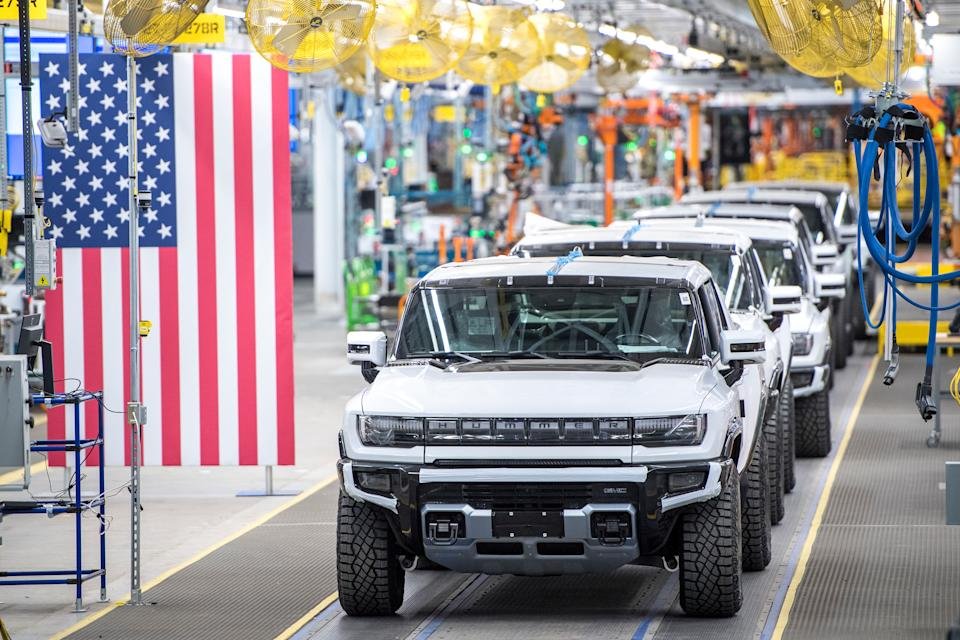
Tesla Disbands Dojo Supercomputer Team, Unwinding Key AI Effort
Key Points
- Tesla Disbands Dojo Team: Tesla is shutting down its Dojo supercomputer project, with team leader Peter Bannon leaving the company and the team being reassigned to other projects within Tesla.**
- Shift to External Partners: Tesla plans to rely more on external technology partners like Nvidia, AMD, and Samsung for compute and chip manufacturing needs.**
- Strategic Pivot Confirmed: Elon Musk confirmed a change in approach, focusing on next-generation AI chips for vehicles that will be effective for inference and training.**
- Talent Exodus: Tesla has experienced a significant loss of key talent this year, amidst rising competition, falling sales, and consumer backlash to Musk’s political activity.**
- Market Impact: Tesla’s shares rose 2.1% following the news, despite a 20% decline in stock value earlier this year.**
Summary
Tesla Inc. is discontinuing its Dojo supercomputer project, a key initiative for developing AI for driverless vehicle technology, as announced by sources familiar with the matter. The project’s leader, Peter Bannon, is departing, and the Dojo team is being reassigned to other Tesla projects, with some members joining the newly formed DensityAI. Elon Musk has confirmed a strategic shift, focusing on next-generation AI chips for vehicles and increasing reliance on external partners like Nvidia, AMD, and Samsung for compute and chip production. This move marks a significant change from Tesla’s earlier multibillion-dollar plan to lead in AI through Dojo, once seen as a potential $500 billion boost to its market value by analysts. The company has also faced a talent drain, with key executives leaving amid declining sales and competition. Tesla’s stock rose 2.1% following the news, despite a 20% drop earlier this year. Additionally, a $16.5 billion deal with Samsung aims to secure AI semiconductors through 2033, diversifying from Taiwan Semiconductor. Musk had previously hinted at a dual approach with external partners, describing Dojo as a high-risk, high-reward “long shot.”
yahoo
August 8, 2025
Stocks

Experts advise caution in adding private assets like crypto to 401(k)s
Key Points
- President Trump's executive order aims to allow 401(k) investors to include private assets like private equity, venture capital, hedge funds, real estate, and potentially gold and crypto in their retirement portfolios.
- Private assets offer diversification and potentially higher returns but come with risks such as lower liquidity and complexity, making them less suitable for those needing quick access to funds.
- Experts advise caution, recommending that investors understand the risks and liquidity rules of private assets and limit allocations to 5-10% initially.
- BlackRock and other major firms are introducing target-date funds with private assets, aiming to boost returns, though concerns remain about higher fees and lack of transparency.
- Critics warn that private assets may not be appropriate for average investors due to their complexity, long lock-up periods, and potential for increased costs.
Summary
President Trump signed an executive order to enable 401(k) investors to diversify into private assets, including private equity, venture capital, hedge funds, real estate, and possibly gold and crypto. This directive tasks the Department of Labor and SEC with creating guidelines for incorporating these investments into defined-contribution plans. Proponents argue that private assets offer diversification and higher returns compared to traditional stocks and bonds, with BlackRock's Larry Fink suggesting a future portfolio mix of 50/30/20 (stocks, bonds, private assets). However, experts like Lisa A.K. Kirchenbauer caution against the risks, including low liquidity and complexity, advising investors to limit exposure to 5-10% and fully understand the investments. Major firms like BlackRock, Empower, and Voya are already developing products with private assets, aiming for enhanced returns, but concerns persist about higher fees, lack of transparency, and suitability for average investors. Critics highlight that private assets, often reserved for sophisticated investors, may conflict with the flexibility needed by 401(k) participants and could increase costs, despite recent reductions in plan fees due to index funds. The move aims to democratize access to alternative investments but raises questions about whether regular savers are equipped to navigate these complex options.
yahoo
August 8, 2025
Stocks
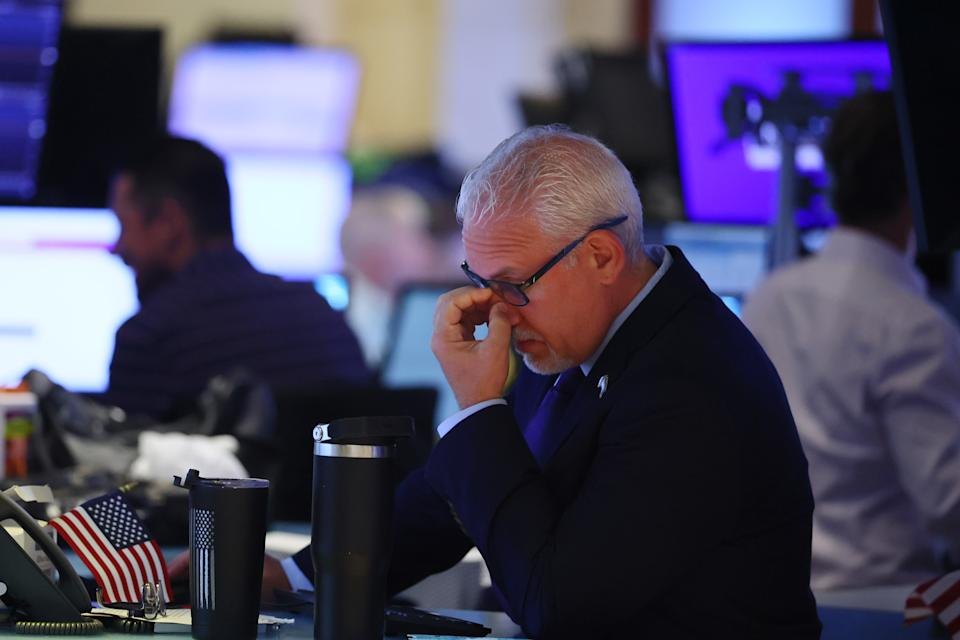
Waller Emerges as Favorite for Fed Chair Among Trump Team
Key Points
- Christopher Waller, a Federal Reserve Governor, is a leading candidate to replace Jerome Powell as Fed chair, favored by President Donald Trump’s advisers for his forecasting approach and deep Fed knowledge.
- Other contenders for the role include Kevin Warsh, a former Fed official, and Kevin Hassett, Trump’s National Economic Council director, with the position opening in May 2026.
- Waller dissented against the Fed’s recent decision to hold interest rates steady, advocating for a rate cut due to labor market weakness, a stance supported by subsequent weak job growth data.
- Trump has expressed frustration with Powell for not cutting rates sooner, raising questions about the independence of monetary policy under a new Fed chair.
- Waller, nominated to the Fed by Trump in 2020, has emphasized the importance of the Fed’s independence and has not yet been directly contacted by Trump about the chair role.
Summary
Federal Reserve Governor Christopher Waller has emerged as a top candidate to succeed Jerome Powell as Fed chair, with President Donald Trump’s advisers valuing his forecasting-based policy approach and extensive Fed expertise. Waller, who has met with Trump’s team but not the president himself, faces competition from former Fed official Kevin Warsh and Trump’s National Economic Council director Kevin Hassett for the role, which becomes available in May 2026. Waller recently dissented against the Fed’s decision to maintain interest rates, advocating for a cut due to labor market concerns—a position later supported by weak job growth data. Trump’s dissatisfaction with Powell’s reluctance to lower rates has fueled speculation about the future of Fed independence under new leadership. Waller, a Trump nominee to the Fed in 2020, has publicly defended the central bank’s autonomy, stating its critical role in the US economy. While Trump has narrowed the candidate list to three and is also planning to fill other Fed vacancies, Waller has not yet received direct communication from the president about the chair position, though he has expressed willingness to serve if asked.
yahoo
August 7, 2025
Stocks
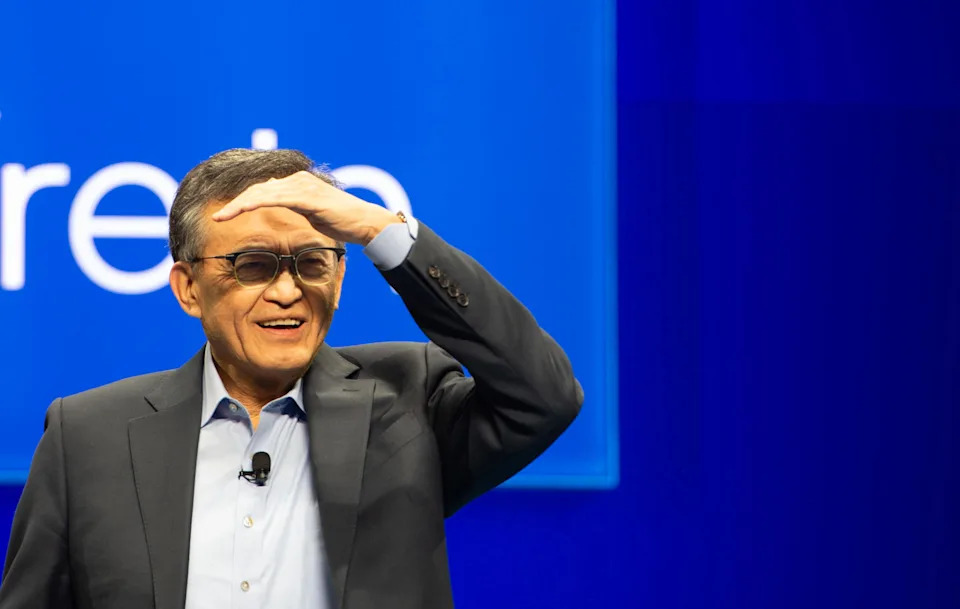
Trump calls for Intel CEO to 'resign immediately'
Key Points
- President Trump called for the resignation of Intel CEO Lip-Bu Tan on social media, citing conflicts of interest due to Tan's investments in Chinese companies through his VC firm, Walden International.
- Intel's stock dropped over 3% following Trump's post, reflecting investor concerns amid ongoing struggles for the chipmaker.
- Tan, who became CEO in March, was initially seen as a potential savior for Intel, but his ties to Chinese entities have drawn scrutiny, including from Senator Tom Cotton, who questioned Intel's compliance with security regulations.
- Intel has faced challenges in reviving its chip manufacturing business, recently announcing a 15% workforce cut and abandoning plans to offer its latest manufacturing technology to customers.
Summary
President Trump demanded the immediate resignation of Intel CEO Lip-Bu Tan via a social media post on Truth Social, alleging conflicts of interest due to Tan's investments in Chinese companies through his venture capital firm, Walden International. Tan, appointed in March to turn around Intel after a turbulent period under Pat Gelsinger, initially boosted investor confidence, with shares rising 15%. However, a Reuters report highlighted his ties to Chinese government funds, and Senator Tom Cotton raised concerns about Intel's obligations under the CHIPS Act, which granted the company nearly $8 billion. Intel's stock fell over 3% after Trump's statement, adding to its woes as shares lag behind competitors like AMD and Nvidia, with only a 1.8% yearly gain. The company, struggling to revive its chip manufacturing, recently cut 15% of its workforce and scrapped plans to offer its latest technology to customers, hindering its competition with TSMC. Intel has not responded to the allegations or Trump's demand.
yahoo
August 7, 2025
Stocks
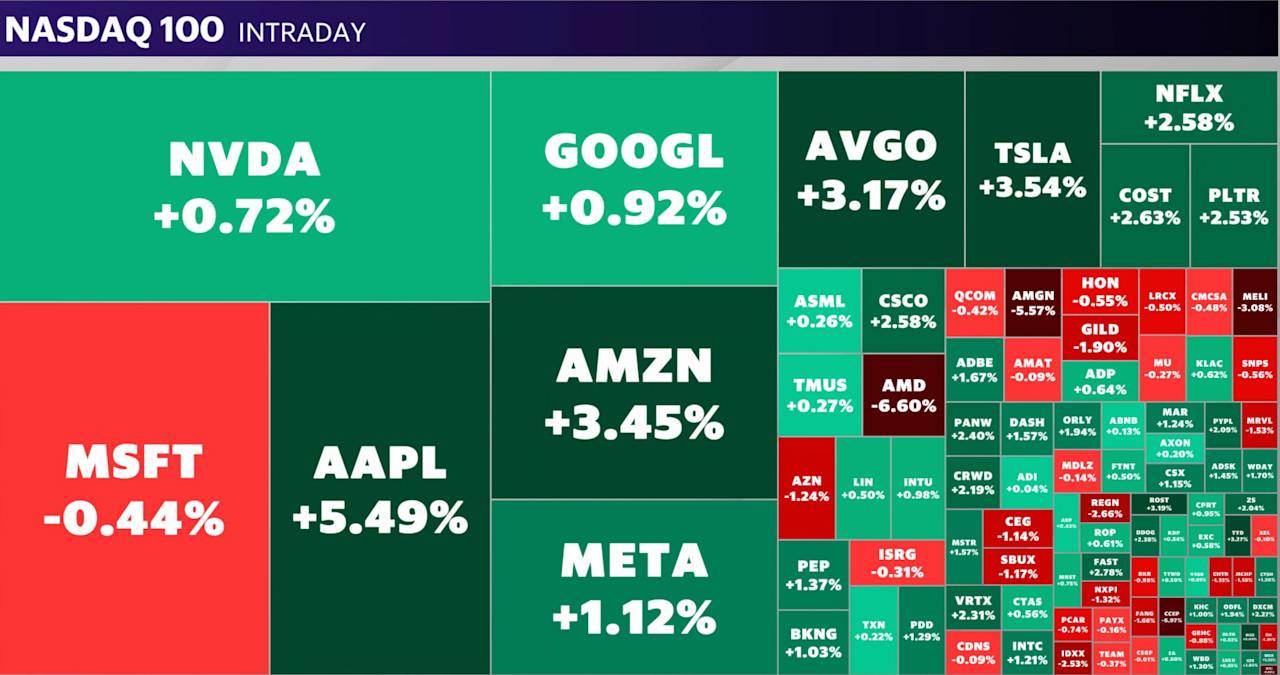
TSMC Shares Surge as Taiwan Says Firm Exempt From Trump Tariffs
Key Points
- TSMC Exemption: Taiwan Semiconductor Manufacturing Co. (TSMC) is exempt from a 100% US tariff on chip imports due to its investments and plant setups in the US, driving its shares to a record high.**
- Economic Growth: Despite new US tariffs, Taiwan's government anticipates economic growth of 3.1% in 2025, bolstered by strong technology exports.**
- Currency Impact: The Taiwan dollar strengthened by up to 0.6% following the tariff exemption news for TSMC, with potential for further appreciation.**
- US Investments: TSMC has committed $165 billion to US projects, including new fabs and research facilities in Arizona, aligning with US policies favoring domestic manufacturing.**
- Broader Implications: Other Taiwanese firms like United Microelectronics Corp. may mitigate tariff impacts through partnerships, while regional competitors and governments seek clarity on US tariff policies.**
Summary
Taiwan Semiconductor Manufacturing Co. (TSMC), a leading global chipmaker, has been exempted from a 100% US tariff on semiconductor imports due to its significant investments in US-based manufacturing facilities, including a $165 billion commitment for new fabs in Arizona. This news propelled TSMC shares to a record high and strengthened the Taiwan dollar by up to 0.6%. Taiwan's government remains optimistic, projecting a 3.1% economic growth for 2025 despite new US levies, driven by robust tech exports that saw a 7.96% growth in Q2. TSMC, crucial to AI chip production, heavily influences Taiwan’s stock index. Meanwhile, other Taiwanese firms like United Microelectronics Corp. may lessen tariff impacts through collaborations, such as with Intel. The US policy, as reiterated by President Trump, favors companies investing in American manufacturing, with Apple also cited as exempt. However, a 20% tariff on other Taiwanese goods remains, higher than rates for competitors like Japan and South Korea. Regional players, including Malaysia and South Korea’s Samsung, are navigating these tariff uncertainties, seeking clarity from the US. This situation underscores the complex interplay of global trade policies and local investments in the semiconductor industry.
yahoo
August 7, 2025
Stocks

Apple announces additional $100 billion in US investment, following Trump iPhone tariff threat
Key Points
- Apple's $100 Billion Investment: Apple announced an additional $100 billion investment in US manufacturing, building on its prior $500 billion commitment, during a White House event with President Trump.**
- American Manufacturing Program (AMP): The investment includes the launch of AMP, aimed at incentivizing global companies to produce critical components in the US, with partners like Corning, Coherent, and Broadcom.**
- Specific Partnerships: Apple is committing $2.5 billion to produce cover glass for iPhones and Apple Watches at Corning’s Kentucky facility and partnering with Coherent for Face ID lasers.**
- End-to-End Silicon Supply Chain: Apple is establishing a comprehensive US silicon supply chain, sourcing wafers from GlobalWafers, collaborating with Applied Materials, and working with Samsung and Texas Instruments on chip technologies.**
- Response to Tariffs: The announcement follows pressure from the Trump administration, including threats of a 25% tariff on iPhones, amid existing and upcoming tariffs on goods from India.**
Summary
Apple unveiled a significant $100 billion investment in US manufacturing during a White House event with President Trump, adding to its previous $500 billion commitment. This initiative includes the American Manufacturing Program (AMP), designed to encourage global firms to produce critical components domestically, partnering with companies like Corning, Coherent, and Broadcom. Key projects involve a $2.5 billion commitment with Corning for iPhone and Apple Watch glass production in Kentucky and collaborations for Face ID lasers and semiconductor technologies. Apple is also building an end-to-end US silicon supply chain with partners like GlobalWafers and Samsung. The move comes amid pressure from the Trump administration, which has threatened a 25% tariff on iPhones not manufactured in the US, alongside existing and new tariffs on goods from India, where Apple assembles many iPhones for the US market. Despite the announcement, industry experts highlight challenges like a lack of skilled workers and supply chain resources in the US, suggesting that building an iPhone plant domestically could take years. Apple's stock rose over 2% following the news, reflecting market optimism about its domestic manufacturing push, even as the company faces significant tariff-related costs, with an $800 million hit reported recently and $1.1 billion more anticipated.
yahoo
August 7, 2025
Stocks

Apple to announce additional $100 billion in US investment, following Trump iPhone tariff threat
Key Points
- Apple (AAPL) plans to invest an additional $100 billion in US manufacturing, announced during a White House press conference with President Trump at 4:30 p.m. ET on Wednesday.
- This follows Apple's previous $500 billion investment in US spending, including an AI server plant in Texas, amid pressure from the Trump administration to manufacture iPhones domestically.
- The announcement coincides with new and existing 25% tariffs on goods from India, where Apple builds most US-bound iPhones, and previous threats of tariffs on iPhones if production isn't moved to the US.
- Industry experts highlight challenges in moving iPhone production to the US, citing a lack of skilled workers and supply chain resources, with potential plant construction taking years.
- Apple reported an $800 million loss due to existing tariffs in its latest earnings and anticipates an additional $1.1 billion in costs this quarter.
Summary
Apple (AAPL) is set to reveal a $100 billion investment in US manufacturing during a White House press conference with President Trump, building on its prior $500 billion commitment that includes an AI server plant in Texas. This move comes amid pressure from the Trump administration to produce iPhones domestically, with threats of a 25% tariff on the devices if Apple doesn't comply. The announcement also aligns with new 25% tariffs on goods from India, where Apple manufactures most US-bound iPhones after diversifying from China post-COVID-19. Trump has criticized Apple’s overseas production, despite industry experts warning that relocating to the US is a daunting task due to insufficient skilled labor and supply chain limitations, with plant construction potentially taking years. Apple’s recent earnings revealed an $800 million hit from existing tariffs, with an expected $1.1 billion more in costs this quarter. This strategic investment may be an attempt to mitigate tariff impacts and political pressure, though significant challenges remain in fully shifting production to the US.
yahoo
August 6, 2025
Stocks

China Draws Red Lines on US Chip Tracking With Nvidia Meeting
Key Points
- China's Stance on Chip Tracking: Beijing is using the summons of Nvidia staff over H20 chip security concerns as a strategic move to oppose US plans for tracking high-end semiconductors, signaling caution to domestic firms and global partners.**
- Nvidia's Position: Nvidia firmly opposes backdoors or tracking mechanisms in its chips, emphasizing that such features undermine trust and security in US technology.**
- Broader Implications: The Chinese action reflects a broader resistance to surveillance capabilities in American semiconductors, potentially resonating with global audiences, including US allies.**
- US-China Relations: Despite the chip dispute, both nations are maintaining a tariff truce and are reportedly close to a deal, with Trump expressing optimism about relations with China.**
- Domestic Impact in China: The scrutiny of imported chips has boosted shares in Chinese chipmakers, as Beijing may leverage the situation to push for domestic substitution or negotiate supply security.**
Summary
In the ongoing US-China trade conflict, Beijing is leveraging the issue of high-end chip tracking to assert its position globally against the Trump administration’s surveillance plans. Chinese regulators recently summoned Nvidia staff over alleged security risks with its H20 chips, a move seen as a warning against future US tracking mandates rather than a direct critique of the chips themselves. Analysts suggest this action aims to caution domestic firms, alert the world, and pressure Nvidia to influence US policy. Nvidia has publicly rejected backdoors or tracking in its technology, citing security and trust concerns. Meanwhile, US officials are exploring chip-tracking methods, though a final deal with China on trade issues, including rare-earth magnets, remains pending. Despite tensions, both sides maintain a tariff truce, with Trump expressing optimism about a potential agreement. China’s resistance to surveillance in American chips may resonate globally, while domestic media and policies push for self-reliance in AI chip production, boosting local semiconductor firms. The situation underscores the delicate balance between technological competition and broader US-China relations, with potential implications for global tech supply chains and security standards.
yahoo
August 6, 2025
Stocks

AMD posts mixed Q2 results but offers better-than-expected Q3 outlook on AI sales
Key Points
- AMD's Q2 Results: AMD reported Q2 adjusted EPS of $0.48, missing Wall Street's expectation of $0.49, but surpassed revenue forecasts with $7.6 billion against an expected $7.4 billion.**
- Q3 Guidance: The company provided a strong Q3 revenue outlook of $8.4 billion to $9 billion, exceeding Wall Street's estimate of $8.3 billion.**
- Stock Reaction: Despite the positive guidance, AMD's stock fell over 4% after the earnings release, though it remains up 44% year-to-date.**
- AI Chip Impact: AMD faced an $800 million impact from a U.S. ban on AI chip sales to China, resulting in a $155 million operating loss for the quarter.**
- Segment Performance: AMD's Data Center revenue reached $3.2 billion, meeting expectations, while its Client business significantly outperformed with $3.6 billion against a forecast of $2.5 billion.**
Summary
Advanced Micro Devices (AMD) released its Q2 earnings, reporting an adjusted EPS of $0.48, slightly below Wall Street's $0.49 expectation, but exceeding revenue forecasts with $7.6 billion compared to the anticipated $7.4 billion. AMD also issued a robust Q3 guidance of $8.4 billion to $9 billion, surpassing analysts' $8.3 billion estimate. However, the stock dropped over 4% post-earnings, despite a 44% year-to-date gain. The company faced challenges from a U.S. ban on AI chip sales to China, incurring an $800 million impact and a $155 million operating loss. On a positive note, AMD's Data Center segment met expectations at $3.2 billion, and its Client business outperformed with $3.6 billion in revenue against a $2.5 billion forecast. The upcoming launch of the MI350 AI chip line, designed to compete with Nvidia's offerings, and the reversal of the China sales ban by the Trump administration, are expected to bolster future performance. AMD's results come ahead of Nvidia's earnings report, with both companies navigating a competitive AI chip market and geopolitical challenges.
yahoo
August 6, 2025
Stocks

Trump tariffs live updates: Trump says pharma tariffs could go to 250%, threatens EU if it fails on investment pledge
Key Points
- Pharmaceutical Tariffs: President Trump announced plans to impose tariffs on pharmaceutical imports, starting small but escalating to 150% within a year and a half, and up to 250% thereafter, to encourage domestic production.**
- Semiconductor Tariffs: Tariffs on semiconductor imports are also set to be announced soon, though specifics on rates and timelines remain under a different category.**
- EU Trade Relations: Trump threatened the EU with increased tariffs up to 35% if it fails to meet a $600 billion investment pledge in the US, while a flat 15% tariff on EU goods has been agreed upon.**
- Copper Tariffs Impact: A 50% tariff on semi-finished copper products, affecting $15 billion in imports, has been implemented, with plans to expand tariffs on other copper-intensive goods within 90 days.**
- Country-Specific Duties: Trump has imposed varying tariffs on countries like Canada (35%), Brazil (50% with exemptions), and India (25% with threats of further increases over Russian oil purchases), alongside trade deals with Mexico and South Korea.**
Summary
President Trump has unveiled a series of aggressive tariff policies targeting various sectors and countries, as reported by Yahoo Finance. He plans to introduce escalating tariffs on pharmaceutical imports, starting small but reaching up to 250% within a year and a half, to boost domestic production, alongside upcoming semiconductor tariffs. Trump also threatened the EU with 35% tariffs if a $600 billion investment pledge isn’t met, though a 15% flat rate on EU goods was agreed upon. Additionally, a 50% tariff on $15 billion worth of copper imports has rattled global markets, with further expansions planned. Country-specific duties include 35% on Canada, 50% on Brazil (with exemptions), and 25% on India, with potential increases due to its Russian oil purchases. Trade deals with Mexico and South Korea offer temporary reprieves or balanced terms. India has criticized the US stance as a double standard, vowing to protect its interests. These moves, alongside ending exemptions on low-value imports, signal a broad protectionist push, raising concerns about inflation and global trade turbulence as Trump’s self-imposed deadlines approach.
yahoo
August 5, 2025
Stocks
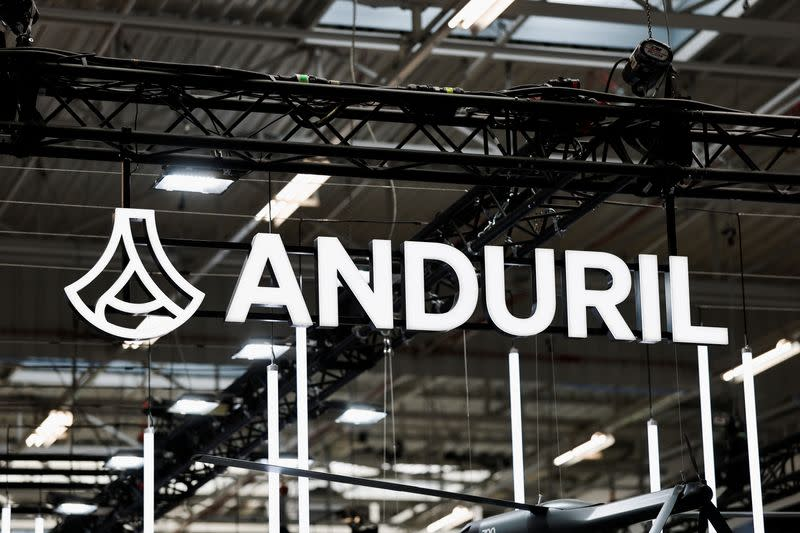
SoftBank Stakes in Nvidia, TSMC Show Son’s Focus on AI Gear
Key Points
- SoftBank's AI Focus: SoftBank Group Corp., led by Masayoshi Son, is intensifying its investment in AI infrastructure by increasing stakes in Nvidia Corp. (to $3 billion) and Taiwan Semiconductor Manufacturing Co. (TSMC, $330 million), alongside Oracle Corp. ($170 million).**
- Vision Fund Monetization: The Vision Fund has liquidated nearly $2 billion in assets in the first half of 2025, prioritizing returns without immediate pressure from SoftBank to sell further holdings.**
- Arm Holdings Strategy: SoftBank is building a portfolio around Arm Holdings Plc, aiming to position itself centrally in AI semiconductor technology without direct manufacturing.**
- Ambitious AI Projects: Son is driving major AI initiatives, including a $500 billion Stargate data center with OpenAI and Oracle, and a proposed $1 trillion AI manufacturing hub in Arizona with TSMC.**
- Market Performance: SoftBank benefits from Nvidia’s 90% and TSMC’s 40% market value gains since April, though it trades at a 40% discount to its asset value, with a market cap of $118 billion compared to Nvidia’s $4.4 trillion.**
Summary
SoftBank Group Corp., under Masayoshi Son, is aggressively pivoting toward AI infrastructure, significantly increasing its stakes in Nvidia Corp. ($3 billion) and Taiwan Semiconductor Manufacturing Co. ($330 million) as of March 2025. This reflects Son’s strategy to capitalize on AI’s growth, centered around Arm Holdings Plc, while building partnerships like the $500 billion Stargate data center with OpenAI and a potential $1 trillion AI hub in Arizona. Despite monetizing $2 billion in Vision Fund assets, SoftBank faces no urgent need to sell further. The company’s stock, trading at a 40% discount to its $175 billion net asset value, has hit record highs, buoyed by Nvidia’s 90% and TSMC’s 40% market gains. However, Son remains unsatisfied, aiming to leapfrog AI leaders through ambitious US projects and leveraging political ties, even as deals like the $6.5 billion Ampere acquisition face scrutiny. SoftBank’s market cap of $118 billion pales against Nvidia’s $4.4 trillion, underscoring the gap Son seeks to close in the AI race.
yahoo
August 5, 2025
Stocks
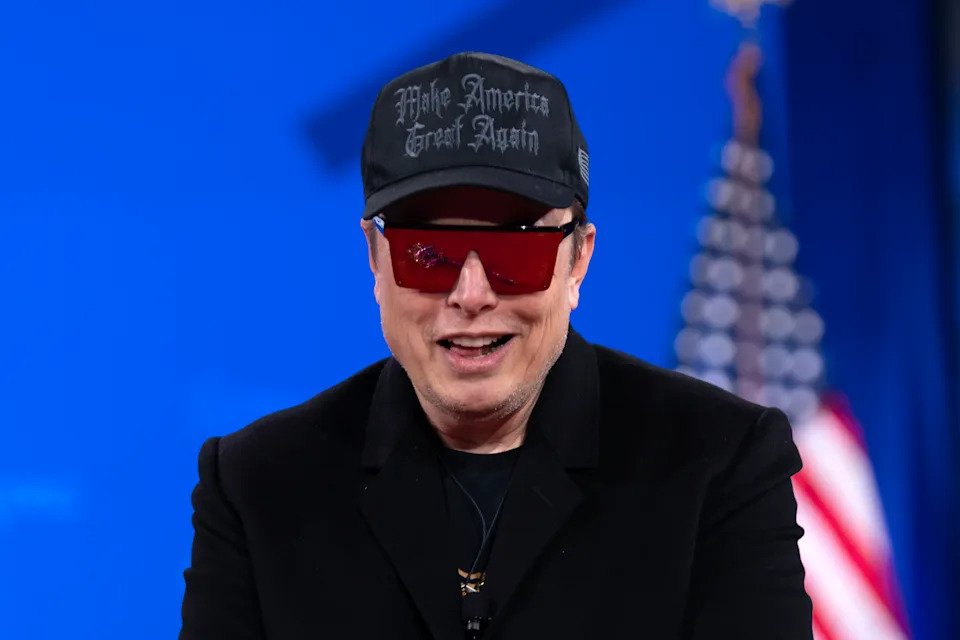
Tesla board approves $30 billion alternative pay deal for Musk
Key Points
- Tesla's board approved a $30 billion alternative compensation plan for CEO Elon Musk as a contingency while a court battle continues over his original $58 billion pay award, which was struck down by a Delaware judge.
- The new plan, requiring shareholder approval, grants Musk 96 million Tesla shares at $23.34 per share, contingent on his continuous service until August 3, 2027, and includes a five-year holding period.
- If the Delaware Supreme Court overturns the ruling against the 2018 plan, shares granted under the new plan must be forfeited and returned to Tesla.
- Tesla's stock faced pressure after a Q2 earnings and revenue miss, with revenue at $22.50 billion against an expected $22.64 billion, a 12% decrease from the previous year.
- The ongoing lawsuit raises significant questions about corporate law, specifically whether stockholders can overrule a judicial decision regarding executive compensation.
Summary
Tesla's board has approved a $30 billion alternative compensation plan for CEO Elon Musk amid a legal battle to reinstate his original $58 billion pay package, which was invalidated by a Delaware judge. Announced in an SEC filing, the new plan aims to incentivize Musk's focus on Tesla and requires shareholder approval. It grants Musk 96 million shares at $23.34 each, contingent on his service until 2027, with a five-year holding period. If the original 2018 plan is upheld by the Delaware Supreme Court, these shares must be returned. Meanwhile, Tesla's stock struggled after a Q2 earnings miss, reporting $22.50 billion in revenue against an expected $22.64 billion, down 12% from last year. The legal dispute, sparked by a shareholder lawsuit in 2018, questions Musk's influence as a de facto controlling shareholder and whether stockholder approval can override judicial rulings. Judge Kathaleen McCormick voided the original package due to Musk's ties with the board and lack of disclosure, a decision reaffirmed despite a second shareholder approval in 2024. The case could reshape corporate law, while Tesla emphasizes the need to retain Musk amid the AI talent war, with analysts suggesting the new plan secures his leadership until at least 2030, easing shareholder concerns.
yahoo
August 4, 2025
Stocks